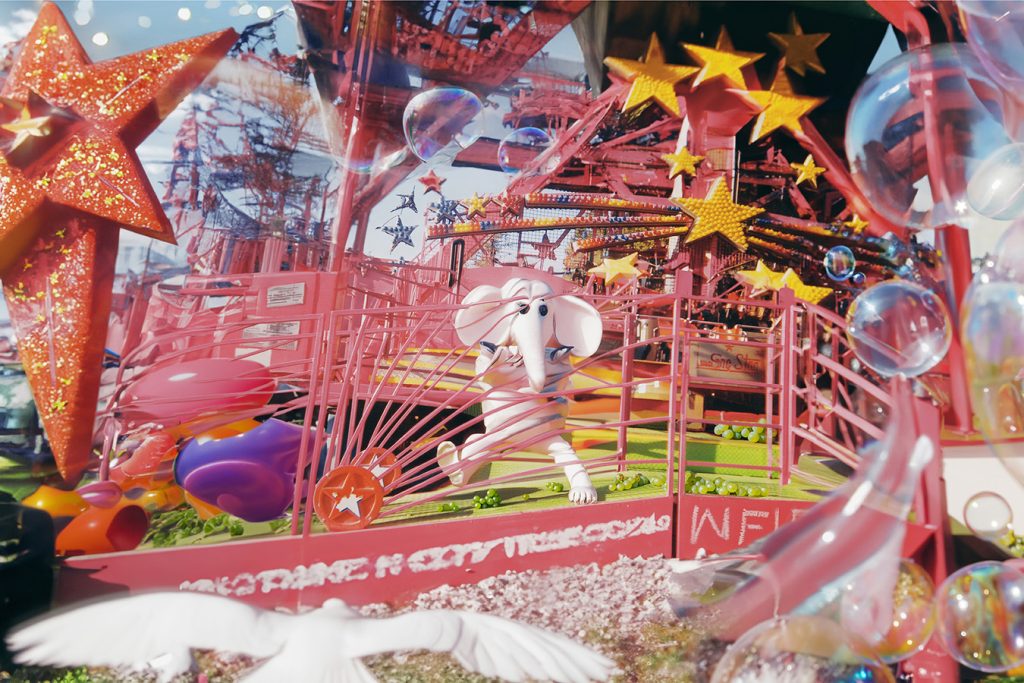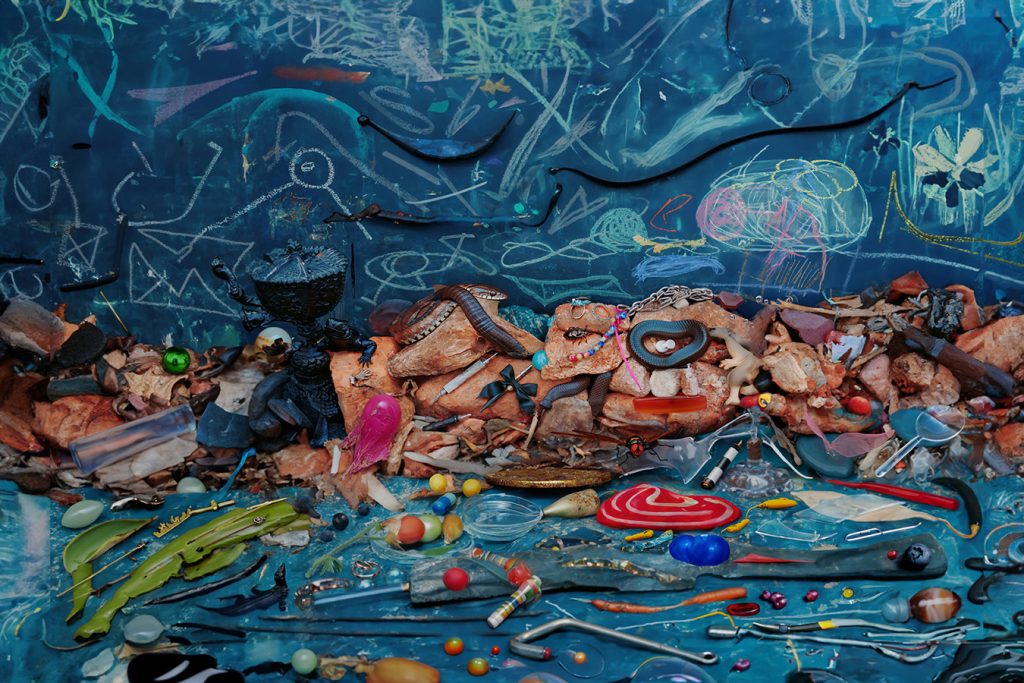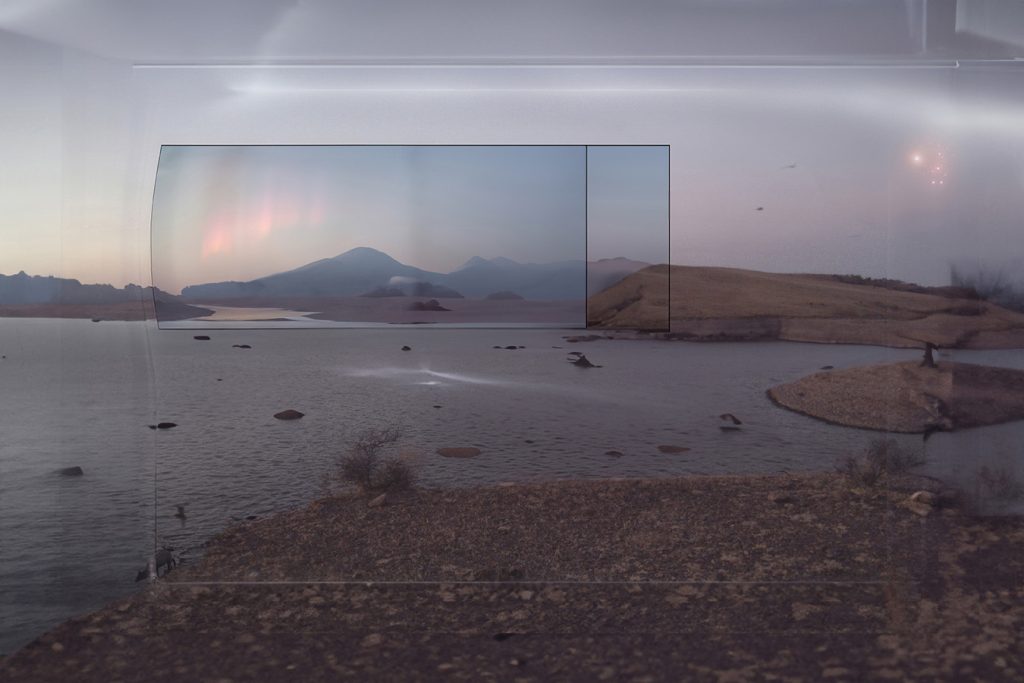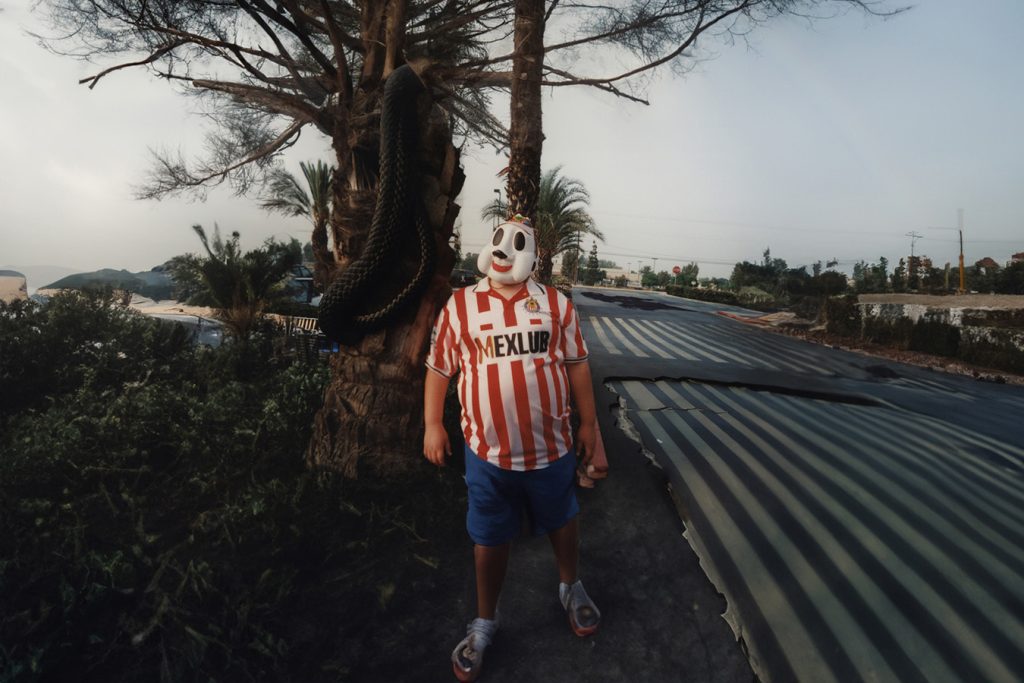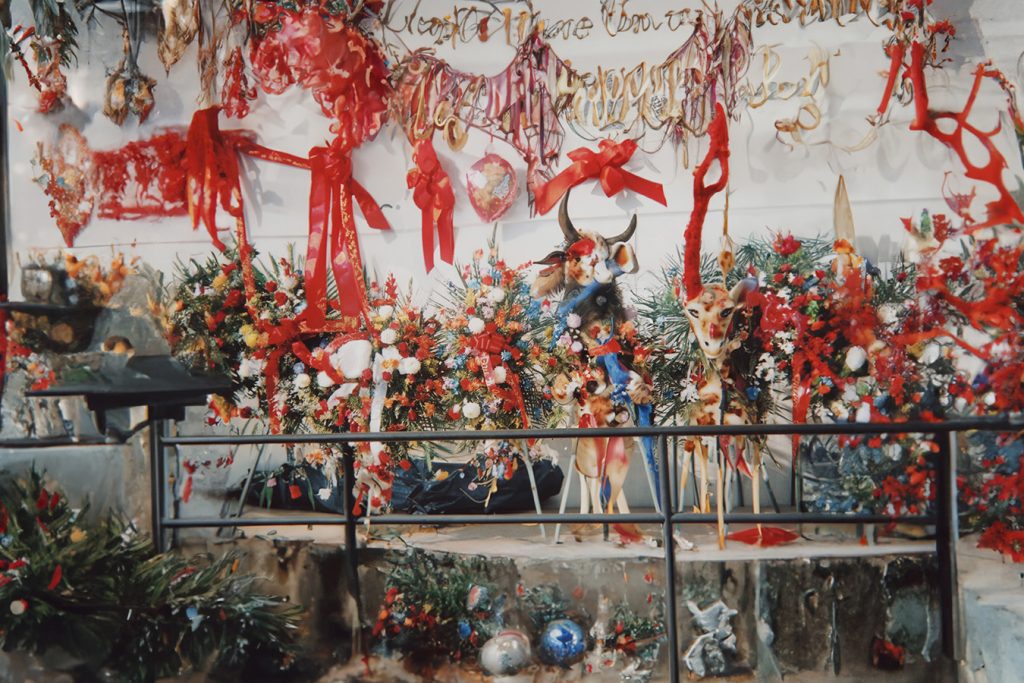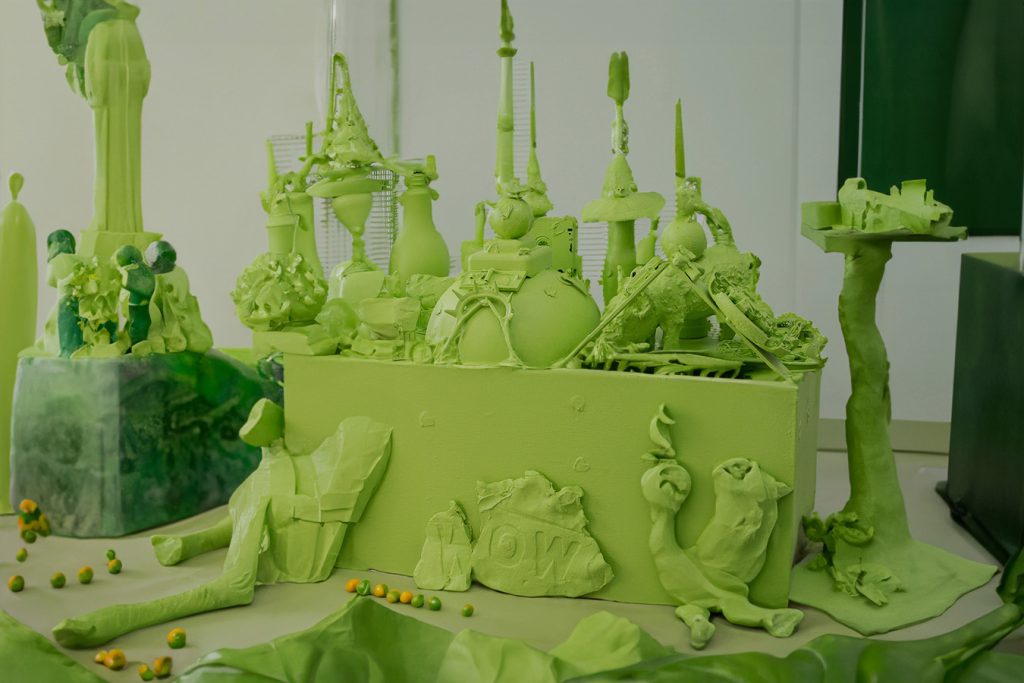Every Day We Have to Invent the Reality of This World: AI Post Photography
California Museum of Photography
October 7, 2023 to March 3, 2024
Back to exhibition home
Steffanie A. Padilla
Artist statement:
“Welcome to the Show” is a series of six works created with Generative Fill—a new AI tool developed by the image software application Photoshop that was released for beta testing in 2023.
The process for this series involves scanning original family photos and adding algorithmically generated images, erasing or transforming family members, and/or expanding the photographic frame and allowing AI to invent new worlds. The subject matter chosen for generative fill often comprises ordinary objects that I encounter in my daily surroundings, ranging from trees and rocks to graffiti, pigeons, sidewalk markings, discarded items, and even trash. To counterbalance these, distinct and less familiar items such as snakes, odd-shaped plush toys, animal mascots, the aurora borealis, and bubbles are added. This amalgamation of prompted elements serves as a metaphorical canvas onto which expressions, challenges, distortions, and acts of rebellion are symbolically built by painting with pixels, so to speak, and taking center stage.
In mediums such as painting, drawing, sculpture, and even collage, the depicted form is usually understood as “not real.” Nevertheless, in photography, rendering light onto a surface has convinced us that how the device sees is, in fact, ‘real’ and can even be used in a court of law as evidence. To explore this concept of truth, I wanted to experiment with qualities of otherworldly sightings when composited with photographic ‘evidence,’ in this case, the family archive, and with the idea of practicing radical imagination. How can new ideas be rendered visually without being quickly dismissed as ‘photoshopped’ or ‘fake’ in an increasingly digitized world? This is a question I grappled with when thinking about the consequences of a world saturated with entertainment and stimuli, thereby generating an aura of confusion and controlled chaos. However, this chaos is paradoxically enveloped in a layer of contrived enchantment, giving rise to an environment that seems almost magically orchestrated or impossible to be real. Perhaps in order to be able to imagine radically new worlds, we must first try to forget the ones created in our memory, which could be tampered with by other recollections supplanted by everyday images, commercial or social media.
The way I see it, AI-generated image tools such as generative fill are offering humanity two important lessons to modern sight. One, we should consistently exercise critical thinking on everything we see, regardless of whether a photo was clearly edited or not. And two, we have trusted images too much as bearers of absolute “truth” and are now being explicitly shown how easily our sense of reality can be fooled. Both lessons, if harnessed for good, can bring forth not only radical imagination, but a radical understanding of the human experience.
As we speed ahead toward a future filled with more convincing synthetic media and personalized messages, reconsidering what pixels on a screen mean, or ink on a piece of paper, could actually help us achieve greater clarity within ourselves where we might all start to insist on wanting to see the real thing—no matter what.
09/12/2023


